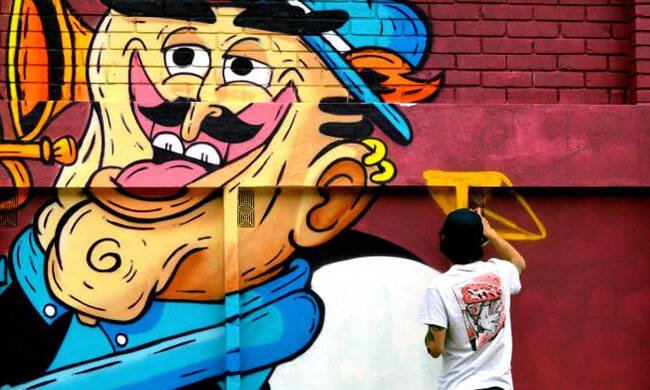For ten years, the Wynwood district of Miami has served as a canvas for hundreds of street artists. It has become a mini American Mecca of graffiti, where crowds of instagrammer flock to take pictures.
Now, the Museum of Graffiti - which wants to be the first museum in the world dedicated to the history of graffiti - opens its gates there. It will be "a place for people to come and learn," explains Alan Ket, one of the museum's founders, a veteran graffiti artist and business consultant. ”
Adults, in fact, do not "grab" graffiti. "Ever since I was little, I wished this place existed, and I waited for the adults to make one."
Two years ago, Kate met Allison Freudin, a Miami-based lawyer who had represented some street artists in court, and they decided to open this museum. They started by ordering 11 murals for the exterior of the building (among them, works by Slick, Shoe, Abstrk and Entes).
Inside the museum, most of the street artists' works commissioned by Kate and Freudin welcome the visitor. A permanent exhibition traces the 60-year history of street art, which is narrated through photographs of murals that have long since disappeared and through vintage spray bottles used by internationally renowned graffiti artists.
Exhibitions of contemporary street artists will be hosted in two additional rooms and periodical exhibitions will be held in another space. Of course, there is a gift shop. The founders of the Museum of Graffiti deny that the ephemeral is inherent in the art of graffiti. "The ephemerality of graffiti is the result of the oppression of graffiti artists," says Kate.
"Even from the point of view of graffiti, there is no reason for our art to be eliminated, for paint to pass over it. We want our art to last forever ". The market does not "catch" it. Museums do not "catch" it. They do not learn about it in schools. We have been deleted from the history of art. It takes people from this movement to build it (the museum). "I think honoring the damaged works of art of previous generations is for us a way of honoring the value and importance we saw as young people in these works that adults did not understand."
